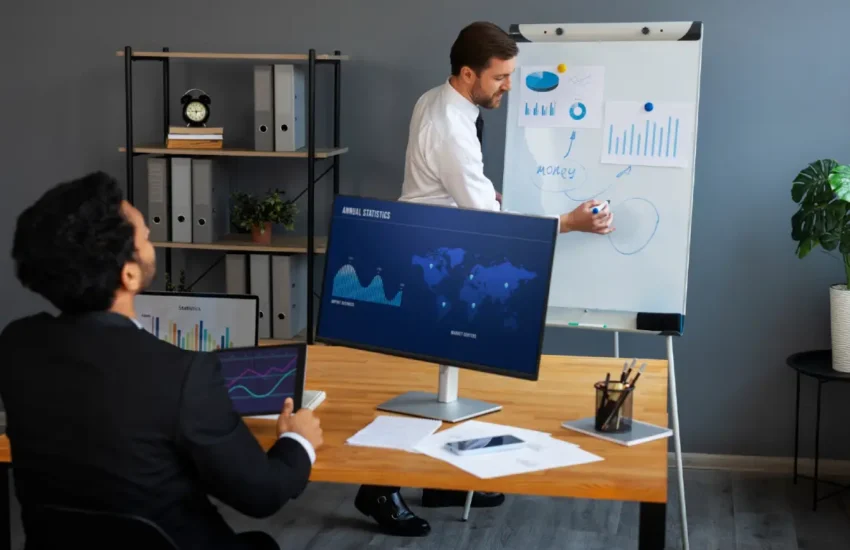Bringing Practical STEM Skills and Knowledge into the Classroom
STEM (Science, Technology, Engineering, and Mathematics) careers are essential for modern society. Professionals in these fields drive innovation, solve complex problems, and contribute to technological and scientific progress.
However, there’s a gap between STEM professionals and STEM education. Bridging this gap can benefit both industries, creating a more knowledgeable and capable next generation of professionals. Emphasizing skills transfer shows how STEM experts can significantly improve education, making it an important topic to discuss.

In this article, we will explore how STEM professionals can transition into STEM teachers, using their analytical, problem-solving, and technical skills to help students. We will focus on adapting these skills for the classroom, effective communication strategies, and using industry experience to inspire learning.
Additionally, we will discuss the importance of ongoing professional development for these new educators, ensuring they stay current in both technical and educational fields.
The Core Competencies in STEM Careers
The main skills needed for STEM careers—analytical thinking, problem-solving, and technical skills—are a must-have for success in these fields. Analytical thinking helps professionals break down complex problems and understand their parts, which is valuable in both research and practical work.
Problem-solving skills allow STEM professionals to create effective solutions to tough problems, using both theoretical knowledge and practical experience.
Technical skills, which include using specialized tools and technologies, ensure that professionals can put their ideas into action. When STEM professionals become teachers, they can bring these skills into the classroom.
Analytical thinking helps explain complex ideas clearly, while problem-solving can be taught through hands-on projects and real-world examples. Technical skills allow educators to show students the latest technologies and methods, preparing them for future careers.
Adapting Professional Skills for the Classroom Setting
Transitioning professional skills to a classroom setting involves more than just simplifying technical language. It requires breaking down complex concepts into understandable parts that students can grasp and use. One effective approach is to explain complex theories through basic principles, which helps deepen understanding.
Keeping students engaged is equally important and can be done through interactive methods like projects, group discussions, and hands-on activities. These methods not only keep students interested but also help them understand the practical side of STEM subjects.
Effective Communication: From Boardrooms to Classrooms
Effective communication is key, not just in boardrooms but also in classrooms, especially for STEM professionals moving into teaching. These professionals need to adjust their communication styles for a learning environment. It’s important to simplify technical terms and present complex information clearly to help students understand.
By doing this, they close the knowledge gap and create a more engaging and informative experience for students.
Additionally, using real-world examples and practical applications can make abstract concepts more relatable and easier to grasp. This approach can make teaching more dynamic and impactful, leading to a better learning environment for students.
Leveraging Industry Experience to Inspire Students
Professionals can greatly improve student learning by using their industry experience to create engaging and inspiring lessons. By sharing real-world scenarios, they can provide concrete examples of how STEM is used in everyday life, making difficult concepts easier to understand.
These professionals can talk about their own projects and achievements, showing the practical importance of STEM and highlighting the challenges and rewards of careers in this field.
By sharing their personal experiences, educators can keep students motivated and show them the real impact of what they’re learning. Additionally, professionals can create hands-on activities that reflect actual industry practices, giving students practical skills and knowledge. This method not only enhances the curriculum but also gives students insights into possible career paths.
Continuous Learning and Professional Development for Teachers
Ongoing education is vital for new STEM teachers to keep their teaching methods up-to-date and relevant. Continuous professional development improves teaching skills and keeps educators informed about the latest advancements in their fields. Workshops, online courses, and teaching communities offer opportunities for growth and learning.
These platforms allow educators to gain new knowledge, share ideas, and use innovative strategies for effective classroom teaching. Actively seeking professional development shows a commitment to teaching excellence, benefiting both teachers and students by creating an informed and progressive educational environment.
Integrating STEM professionals into education bridges an important gap, enriching both teaching and learning experiences. By bringing their analytical, problem-solving, and technical skills to the classroom, these professionals make complex concepts accessible and engaging.
They enhance education with real-world examples, hands-on activities, and personal industry insights, motivating students and preparing them for future careers. Continuous professional development ensures these educators stay current with both educational strategies and technological advancements.
This synergy between STEM expertise and education fosters innovation, equips students with essential skills, and ultimately benefits society by cultivating a more knowledgeable and capable workforce.


